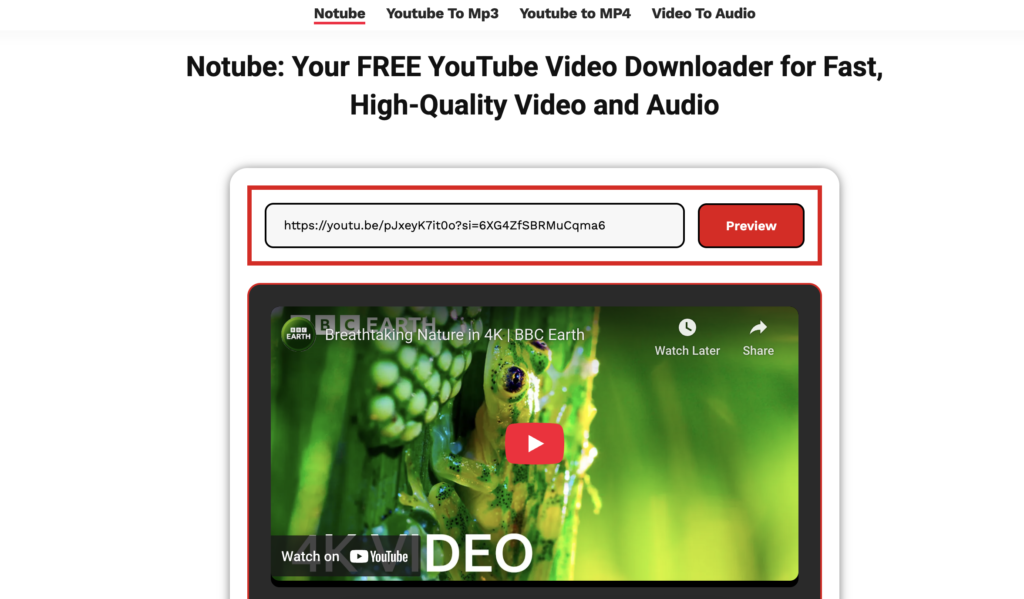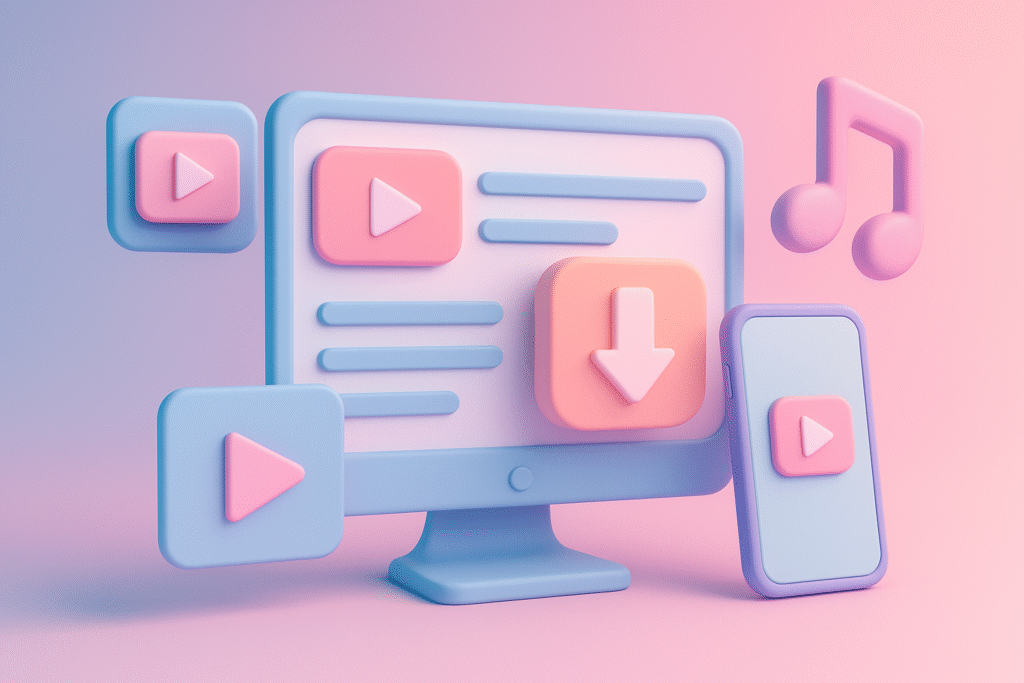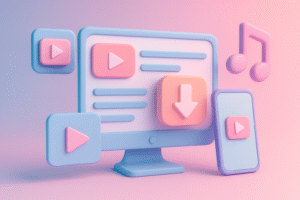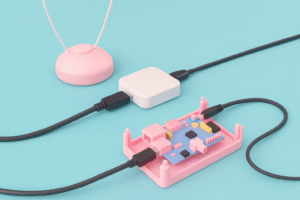Playlists on YouTube are a kind of digital survival kit.
They gather tutorials, workouts, lectures, or just the songs that get you through a rainy day, into tidy little collections.
The problem? They live entirely online.
That’s totally fine when you’ve strong Wi-Fi at home, but try loading them on a long bus ride or during a patchy airport connection, and it’s a recipe for frustration.
YouTube itself doesn’t offer a built-in way to download playlists.
The platform is designed for streaming, not saving. That leaves viewers looking for alternatives.
This is where a YouTube Video Downloader comes in. With the right tool, you can save whole playlists directly to your device, turning online-only collections into offline libraries.
Why Save YouTube Playlists?
The number one reason is obvious: offline convenience.
Once your playlist is downloaded, you’re free from spinning buffer wheels and awkward pauses.
Even better, you avoid those mid-session ads that seem to appear at the worst possible moment, right when you’re about to nail a workout set or when the lecturer finally explains that tricky formula.
Saving playlists also cuts down on mobile data use. If you’re the kind of person who streams hours of content each week, downloading once and replaying offline saves you from burning through your data plan.
Travelers swear by offline playlists, too.
Imagine being stuck on an overnight flight with nothing but spotty in-flight Wi-Fi, and your downloaded videos suddenly feel like a lifeline.
Students benefit in a similar way. Think of it as creating your own academic toolkit: lectures, crash courses, and study material lined up and ready without needing a signal.
And for music lovers, downloading turns YouTube into your personal jukebox. With a YouTube to MP3 convert option, your playlists can live on your phone like a regular music library.
What Is a YouTube Video Downloader?
At its simplest, a YouTube Video Downloader is just a tool that lets you download videos, or entire playlists, from YouTube to save them offline for watching or listening.

Instead of hitting play and looking for buffering or waiting for the internet to cooperate, you just have your own local copy.
These downloading tools come in a few different forms:
- Online services: Websites where you paste a playlist link, pick a format, and download. Fast, but usually with file size or resolution limits.
- Desktop software: Full-featured programs for computers. They typically handle bulk downloads, offer HD options, and give you more control, which is great if you’re doing a YouTube to MP4 conversion for higher-quality video.
- Mobile application: Designed for convenience, ideal for watching on your phone.
- Browser add-ons: Extensions that integrate into YouTube itself, often adding a download button under the video player.
Option comes with pros and cons. Online services are lightweight and simple, but slower. Desktop apps are heavier but far more powerful.
Step-by-Step Guide: Saving a YouTube Playlist
Once you’ve chosen your downloader, the process is usually straightforward:
- Pick the playlist link – Open YouTube, navigate to the playlist, and copy its URL.
- Open your chosen downloader – Whether it’s software, a website, or an extension.
- Paste the link – Drop it into the input field.
- Pick your format – Decide if you want MP4 for video or MP3 for audio only. If your playlist is mainly podcasts, lectures, or music, the YouTube to MP3 convert option makes more sense. For movies or tutorials, you’ll likely want MP4.
- Check what to keep – Some tools let you download the entire playlist, while others allow you to select specific videos.
- Download and save – Once the process finishes, the files will be saved to your device for offline use.
It’s not hard, but the tool you use makes all the difference in quality, speed, and reliability.
Best YouTube Video Downloader Tools for Playlists
There are numerous tools out there, and not all are created the same. Here’s a quick breakdown:
- Website-based platforms: No installation required, but usually capped in speed and resolution.
- Desktop software: Best for batch downloads, HD support, and reliable conversions (especially for YouTube to MP4 conversion tasks). If you care about crisp visuals or fast speeds, this is the way to go.
- Mobile apps: Handy for on-the-go downloads straight to your phone.
- Extensions: Seamless and quick, though they sometimes break when YouTube updates its interface.
When comparing, pay attention to speed, supported formats, ease of use, and cost. Free tools work, but premium software usually delivers smoother results.
Tips When Using These Downloaders
Not every downloader you find online is safe. Some are riddled with ads that try to trick you into clicking the wrong button, while others may attempt to sneak malware onto your device.
A few simple precautions can save you headaches:
- Stick with tools that have good reputations and positive reviews.
- Avoid sites overloaded with confusing pop-ups or misleading “Download Now” buttons.
- Antivirus software should be running in the background while using these tools.
- Use a VPN if you want to add a layer of privacy.
- Never share personal information just to download a video.
Treat it like installing any other app, if you wouldn’t risk downloading something sketchy onto your computer, don’t take chances with video tools either.
Legal Considerations of Downloading a Video from YouTube
This part is important. YouTube’s terms of service clearly say downloading is not allowed unless YouTube itself offers the feature. Which means technically, using third-party downloaders sits in a gray zone.
Intent matters. Saving videos for personal use, like study sessions, workouts, or long flights, is very different from re-uploading or selling them. The latter crosses into copyright infringement and can carry legal consequences.
The safest route is simple: use downloaders for yourself, and never redistribute someone else’s work.
Alternatives to Downloaders
If the gray area makes you uneasy, YouTube itself does offer official solutions, though with limits.
- YouTube Premium: Lets you save videos within the app for offline viewing. It’s seamless, ad-free, and legal. The catch? You can only access those downloads inside the YouTube app.
- Save Offline: Available in certain regions, this feature allows you to temporarily store some videos, although not all videos are eligible.
These options don’t give you much flexibility as a YouTube downloader, but for offline viewing, they’re safe and simple.
Conclusion
At the end of the day, saving YouTube playlists is about control.
Whether you’re a student building a study archive, a traveler stocking up on entertainment, or someone who just wants music without interruptions, downloaders make your playlists portable.
From web-based services to desktop programs, there’s a tool for every type of user.
If you want quick, casual downloads, online sites work fine. If you want smooth, high-quality results, especially for converting YouTube to MP4, desktop apps are your best bet.
And if you’re after just the audio, a YouTube to MP3 convert tool turns playlists into instant music collections.
The key is to use them wisely: choose safe tools, respect copyright, and remember that playlists are more than random collections.
Your playlists aren’t random; they’re picked for a reason. Downloading them offline keeps them close, ready to play anytime, even if the internet lets you down.








